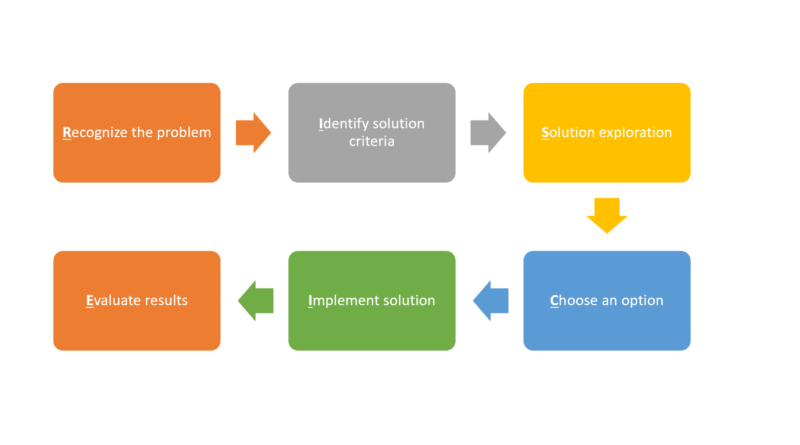6 Steps (RISCIE model) for Rational Decision Making
Originally published at ProjectManagement.com
Have you ever made a program or project decision that did not turn out to be the right one? As program managers, we not only need to make several decisions over the course of a project or program, but we also need to guide our teams with decision making.
Here is a framework to help you make decisions based on data and objective criteria. I heard about the RICIE model in a strategic management course, and found it to be really helpful to internalize the steps needed for rational decision making. Here I am proposing the RISCIE model, which is a minor modification to that model.
The RISCIE framework has six steps:
1. Recognize the problem/opportunity: In this phase, identify an opportunity or a problem that you want to solve. If it is a problem, identify the root cause of the problem. Do not mistake symptoms for problems. Example: Team members are consistently missing deadlines. This is a symptom that is a result of either bad planning, unclear requirements or team members’ lack of experience.
2. Identify solution criteria: Most of the time, we jump to solutions instead of identifying the solution criteria. To choose the best solution, come up with a list of criteria that the solution must meet. Example: The solution must be implemented in three months to meet the launch date, or should cost below a certain amount. Prioritize the criteria.
3. Solutions exploration: Analyze possible solutions that would fit the solution criteria. Do not stop with just one solution—explore multiple ones.
4. Choose a preferred course of action: In this step, evaluate all the solutions against each of the criteria that were identified in Step 2. Choose the solution that meets the most criteria. If there are multiple solutions that meet all the criteria, evaluate if there is a possibility to do a quick prototype or proof of concept of each of the solutions. This would uncover any pros/cons of the solutions that were missed in Step 3.
5. Implement the preferred course of action: The next step is to implement the chosen action. Ensure that any solution criteria that were defined upfront are indeed being met with this solution.
6. Evaluate the results and follow up as necessary: Lastly, evaluate the results. Ensure all the KPIs are being measured, and operationalize the solution. Do a lessons-learned or a retrospective session to use them for subsequent decisions.
Ensure everything is documented and that all the key stakeholders are involved in every step of this process. While this process does not guarantee successful outcomes, it does guarantee that your decisions are based on data and objective criteria. Do not measure the success of a decision based on the outcome (outcome bias). I plan to write my next post around this topic. Stay tuned!
What tips do you have for rational decision making in your projects and programs? What mistakes have you made, and what are your lessons learned?
